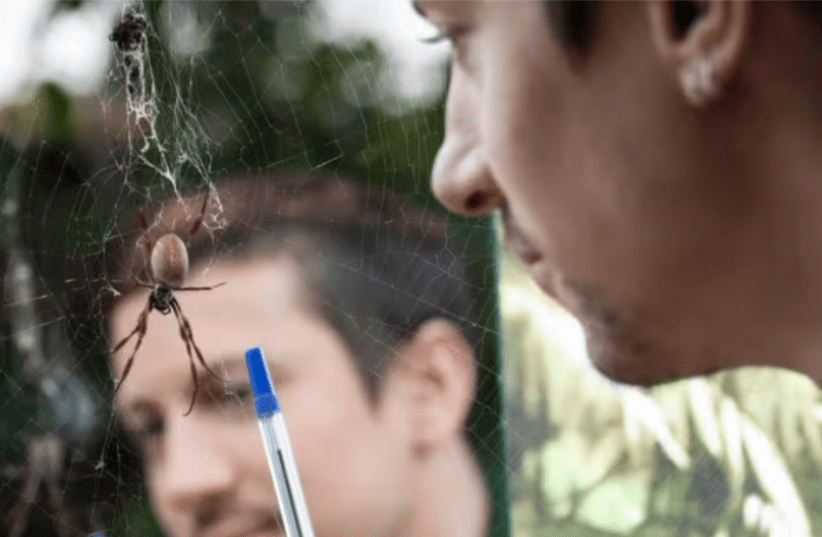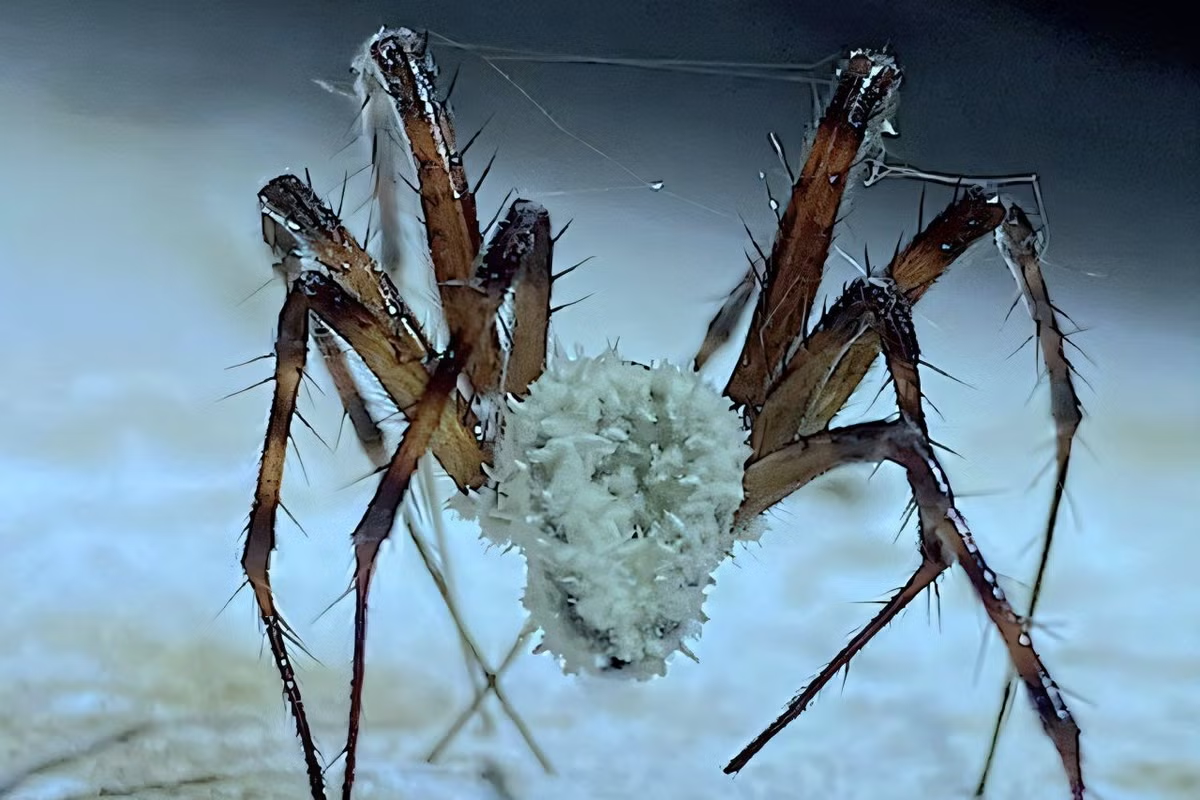The discovery of a new parasitic fungus in Ireland that turns spiders into “Zombie Spiders” has captured the imagination of both scientists and the general public. Resembling something out of a horror film or the popular video game The Last of Us, this fungus manipulates its host’s behavior, ultimately leading to its demise in a highly unusual way.
Found deep within Ireland’s cave systems, this bizarre organism, named Gibellula attenboroughii after the renowned naturalist Sir David Attenborough, has raised new questions about the eerie relationship between fungi and their insect and arachnid hosts.
A Fungus That Controls Its Host
The fungus was first discovered in County Down during the filming of BBC Winterwatch in 2021. Scientists observed its ability to take control of cave-dwelling spiders, altering their natural instincts and forcing them into self-destructive behavior.
Unlike healthy spiders that tend to remain hidden in dark corners of caves or concealed within their webs, infected spiders were found in exposed areas—such as cave walls and ceilings—where they eventually perished.
Researchers believe the fungus hijacks the spider’s nervous system by manipulating dopamine levels, the chemical responsible for pleasure and motivation in many organisms.
By doing so, the fungus compels the spider to abandon self-preservation instincts and prioritize the dispersal of fungal spores instead. This unnatural shift in behavior ensures the survival and reproduction of the fungus, while the host spider becomes little more than a vehicle for its spread.
Read : Flesh-Eating Disease Develops in 59-Year-Old Man After Being Bitten by Spider in the UK
This phenomenon is reminiscent of the infamous Ophiocordyceps fungi, known for infecting ants in tropical regions such as the Brazilian rainforest. These so-called “zombie-ant” fungi take over their host’s body and mind, leading them to climb to high vegetation before the fungus erupts from their bodies and spreads its spores.
Read : Extraordinary Case: Indonesian Conjoined Twins Born with 4 Arms, 3 Legs
The discovery of a similar fungus in Ireland suggests that nature may harbor more of these mind-controlling organisms than previously thought.
How the Fungus Was Found
The research into Gibellula attenboroughii intensified after a specimen was discovered in a gunpowder store at Castle Espie in County Down. A team led by Dr. Harry Evans from the Centre for Agriculture and Biosciences International (CABI) set out to find more infected spiders in Ireland’s caves.
To aid their exploration, they enlisted a speleologist—a cave explorer—who helped navigate the dark, damp environments where these fungi thrive.
Their findings indicated that the fungus is native to Ireland and is highly specific to certain cave-dwelling spider species. It was identified in two particular species: Metellina merianae and Meta menardi, both of which belong to the orb-weaving spider family.

These spiders are usually well-adapted to their subterranean habitats, avoiding predators and external threats by staying hidden in their intricate webs. However, the fungus disrupts this behavior, leaving them vulnerable and exposed.
Interestingly, the fungus appears to prefer human-made environments such as tunnels, culverts, and cellars. This raises questions about how it evolved and whether human activity may have influenced its spread.
The findings were published in the scientific journal Fungal Systematics and Evolution, shedding light on the mysterious and little-understood world of parasitic fungi.
Should Humans Be Concerned?
While the concept of a mind-controlling fungus may sound terrifying—especially given its similarities to the The Last of Us storyline—scientists assure the public that there is no immediate danger to humans.
Unlike Ophiocordyceps, which has evolved over millions of years to infect specific ant species, Gibellula attenboroughii appears to be strictly limited to cave-dwelling spiders. There is no evidence to suggest it could cross over to larger animals or humans.

However, the discovery raises important scientific questions. How do such fungi evolve their mind-controlling abilities? Could climate change and human environmental impacts influence the spread of such parasitic organisms?
More research is needed to fully understand the mechanisms behind fungal manipulation of host behavior and whether similar species exist in other parts of the world.
For now, Gibellula attenboroughii remains a fascinating yet unsettling example of how nature can produce seemingly nightmarish scenarios. As scientists continue to explore the hidden ecosystems of caves and other isolated environments, who knows what other strange organisms might be waiting to be discovered?
let’s enjoy few years on earth with peace and happiness….



